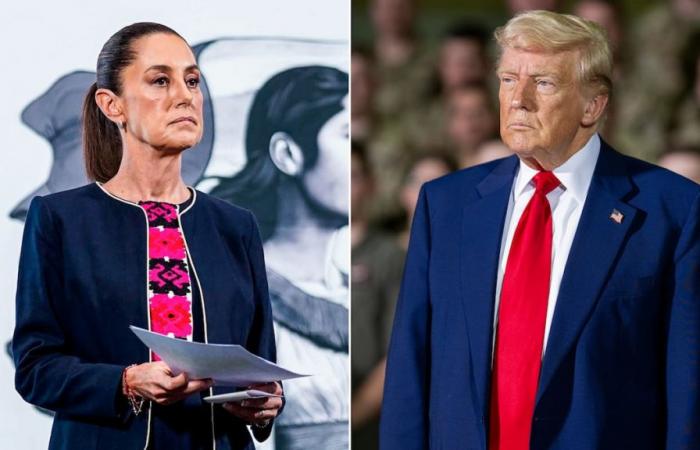
In a telephone conversation a month ago, Donald Trump came to propose to Claudia Sheinbaum that the United States Army would enter Mexican territory to combat hand in hand to organized crime. This was told this Saturday the president, who added that his response was: “No, President Trump.” Sheinbaum has left the passage of information published this week by The Wall Street Journal About a telephone call, succeeded on April 16, where Trump would have pressed his counterpart in the framework of a bilateral crisis with multiple open flanks: commercial, migratory and security.
Sheinbaum emphasized that in no case was an imposition, but a suggestion: “In one of the calls, he told me ‘what can we help them to fight drug trafficking? I propose that among the United States army to help them.” To which he responded with a refusal: “You don’t need, you can collaborate, work together, but you in your territory, we can share information, but we will never accept the presence of the United States Army in our territory. Sovereignty is inviolable.”
The president’s statements arrive at a time of some improvement in the crisis with the northern neighbor. This same week, the White House confirmed that it will not impose tariffs on the Mexican automotive industry under the Free Trade Agreement. A great relief for a capital sector in the Mexican economy. At the same time, both Trump and the Attorney General, Pam Bondi, also sent this week a signal in tune with one of Mexico’s historical demands. They instructed all US agencies with jurisdiction on the border to “apply hard hand” and intensify efforts to curb the flow of weapons towards the south, one of the levers that feeds the violence of organized crime in Mexico.
The shadow of a military intervention, more or less soft, has been planning from Trump’s return to the White House. The qualification of terrorists to Mexican organized crime organizations, finally formalized in February, has been one of the most delicate chapters. Treat drug trafficking groups as terrorists opens the door to great discretion by US authorities. Both in military, intelligence and even the case, interventions even in Mexican territory.
The intelligence agency, the CIA, stepped on the accelerator the previous months with flights of unmanned drones to spy on the activities of drug trafficking mafias. Flights were not limited to the border between the two countries, but were developed very within Mexico, according to a Trump administration official The New York Times. Other US media claim, citing military sources, that there were at least 18 flights of that type during the first two weeks of Trump’s presidency.
A Pentagon aircraft was identified on February 3 off the coast of Sinaloa, in the Pacific corridor, one of the largest areas of synthetic drug production, such as methamphetamine and, above all, fentanyl. The powerful opioid has caused a public health crisis in the United States, responsible for more than 70,000 deaths a year. It is one of the greatest obsessions of the Trump administration and points to Mexico as the great culprit.
The Armed Forces recognized a week after that first flight that was actually ordered by the White House. Little else. “We don’t know what they did,” admitted Ricardo Trevilla, the Secretary of Defense. Both then and now, President Sheinbaum insisted on messages with warning: “That no one dares to violate our sovereignty.” While at the same time tends your hand to negotiation on the different open fronts. Both parties work at several tables in which everything is negotiated at the same time, Trump style. Tariffs are, for example, the pressure gun to achieve concessions in the fight against drug trafficking or irregular migration.





